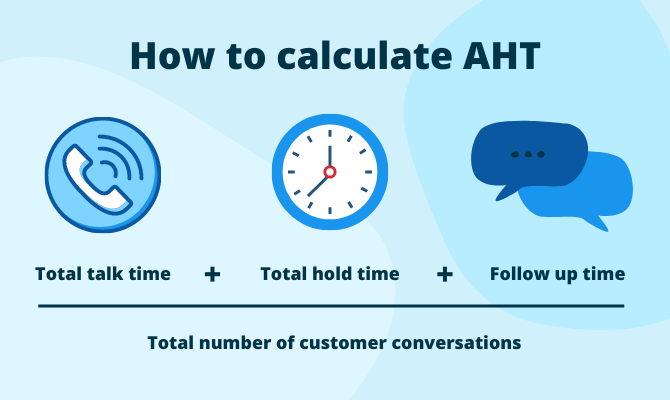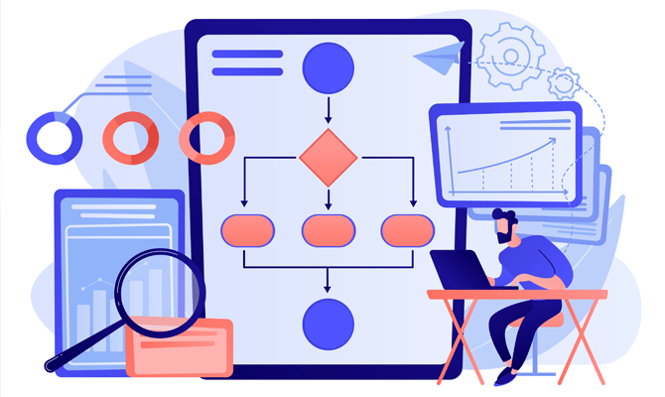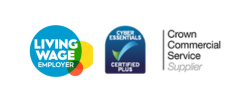There are many different approaches that have a positive effect on your average handling time:
- Provide the right training
- Create a knowledge base
- Unify your agent desktop
- Automate processes
- Evaluate your agents
- Listen to your agents
- Invest in the right payment solution
- Solve problems first
What is AHT?
A company’s average handling time, or AHT, is the average length of time that an interaction lasts between a customer and an agent, including any work that the agent undertakes after the call has finished. Comprising talk time (the overall time that the conversation lasts), hold time (the time a customer waits for an agent to respond), and after call work (or ACW, the time spent to resolve the query after the call has finished), AHT begins as soon as a customer reaches out and ends once the query has been resolved.
Why is AHT an important metric?
An agent’s average handling time is usually a reliable indicator of good performance. The shorter the time that a customer has to spend with an agent, the better the customer experience, which can help to improve other metrics like your CSAT (customer satisfaction) and NPS (net promoter score, which measures customer loyalty).
That being said, it’s important to recognise that AHT often isn’t the top priority, and should be looked at alongside these other metrics in order to grasp a sense of an agent’s overall performance. Speed isn’t everything - if an agent has a low average handling time as well as a low CSAT, it means that call quantity is being prioritised over call quality.
What is a good AHT?

The faster the average handling time, the better. A good AHT is low, in which the agent has been precise and efficient in dealing with the customer’s problem.
How to calculate AHT
You can calculate your agents’ AHT by adding your total talk time, total hold time and total after-call work time together, then dividing the resulting figure by the overall number of calls or interactions.

How to reduce AHT
Provide the right training
Having the right software is helpful, but your agents must know how to use it. Providing your team with the best possible training is essential for maximising their efficiency.
Teaching your agents to practise active listening on customer calls can help improve your average handling time by enabling them to get to the root of the problem without repetitions from the customer. Active listening entails four steps: listening, responding, reflecting and retaining.
A great way of doing this on call is by summarising and repeating the customer’s information back to them, ensuring that the information is correct whilst also allowing the customer to feel heard and understood, which helps to improve the overall customer experience.
Create a knowledge base
Equipping your agents with a well-rounded knowledge base with an easy to use interface enables them to search for answers to customer queries easily and efficiently.
Implementing a knowledge base gives your agents access to all the information they may need, as well as ensuring that they feel supported and connected. You should aim to review and renew your knowledge base regularly to make sure that your information is up to date, to make sure that your team has access to all the information they need about new and changing processes and products without needing to put the customer on hold or transferring them to another department.
Unify your agent desktop
Ensuring that your agents have access to customer records, including history of interactions and previous problems, can allow your team more visibility and give them access to relevant contextual information, enabling them to deliver a more personalised and efficient service.
It also ensures that after-call work is reduced, as the contact can be automatically logged against an existing customer profile. This can improve your average handling time and streamline the overall process from beginning to end.
Automate processes
Automating your processes with software can cut down your AHT drastically by reducing the demand on your agents to organise customer information, making it easier for them to solve the problem at hand.
Robotic process automation (RPA) software can help to empower your agents with the right information at the right time, so they can resolve customers’ issues rapidly and offer solutions based on personalised, predictive insights.
You can also utilise IVR software to implement skills-based routing to reduce average handling time simply by directing the customer call to the right agent at the time of calling. This helps to provide quick service and can also improve your first call resolution, as the agent who picks up the initial call is more likely to follow it through to the end.

Evaluate your team
Making improvements always starts with understanding what it is that needs to improve. Evaluating your agents’ performance regularly against predetermined goals and measures of success will allow you to make targeted improvements, helping your team to be the most efficient that they can be.
You might consider using interaction analytics and building AI into your contact centre to provide real-time interaction guidance (RTIG), as well as incorporating tools such as sentiment analysis to understand the general sentiment of your calls and whether they result in positive or negative results. Find out more about quality management here.
Through monitoring your new agents and gathering feedback from your existing ones, you’ll be in a good place to be able to identify any training gaps and communicate constructive criticism to your team to help them perform better.
Listen to your agents
Though evaluating your agents is an essential part of helping them improve, your agents must also be able to evaluate the systems and processes in place to support them on customer calls. Taking the time to listen to your agents’ feedback and make changes to help them work better will inevitably improve your average handling time, as well as boosting team morale.
Invest in the right payment solution
Did you know that the right payment solution can drive an 8% reduction in AHT in calls that include payments? That’s a whole 24 seconds from a 5 minute call.
Ensuring that your process includes a PCI compliant payment solution that is easily accessible to your agents during calls can help streamline calls and reduce average handling times by taking payment from customers without disruption.

Solve problems first
Surprisingly, prioritising AHT over a problem solving approach can actually make your average handling time slower overall, as well as worsening the customer experience. The key to a low AHT is taking the time to listen to the customer and put their needs first.
It's important to remember that AHT is a subjective metric: an efficient self-service solution like an accessible knowledge base will empower your customers with simple queries to discover the answers themselves, therefore meaning that the calls your centre takes are likely to be more complex and require more time to resolve. AHT is a useful benchmark to measure internally, but will always be influenced by other areas of the contact centre infrastructure and as such should never be considered in isolation.
For more information on how software can help reduce your average handling time, download our free knowledge management eBook now.




